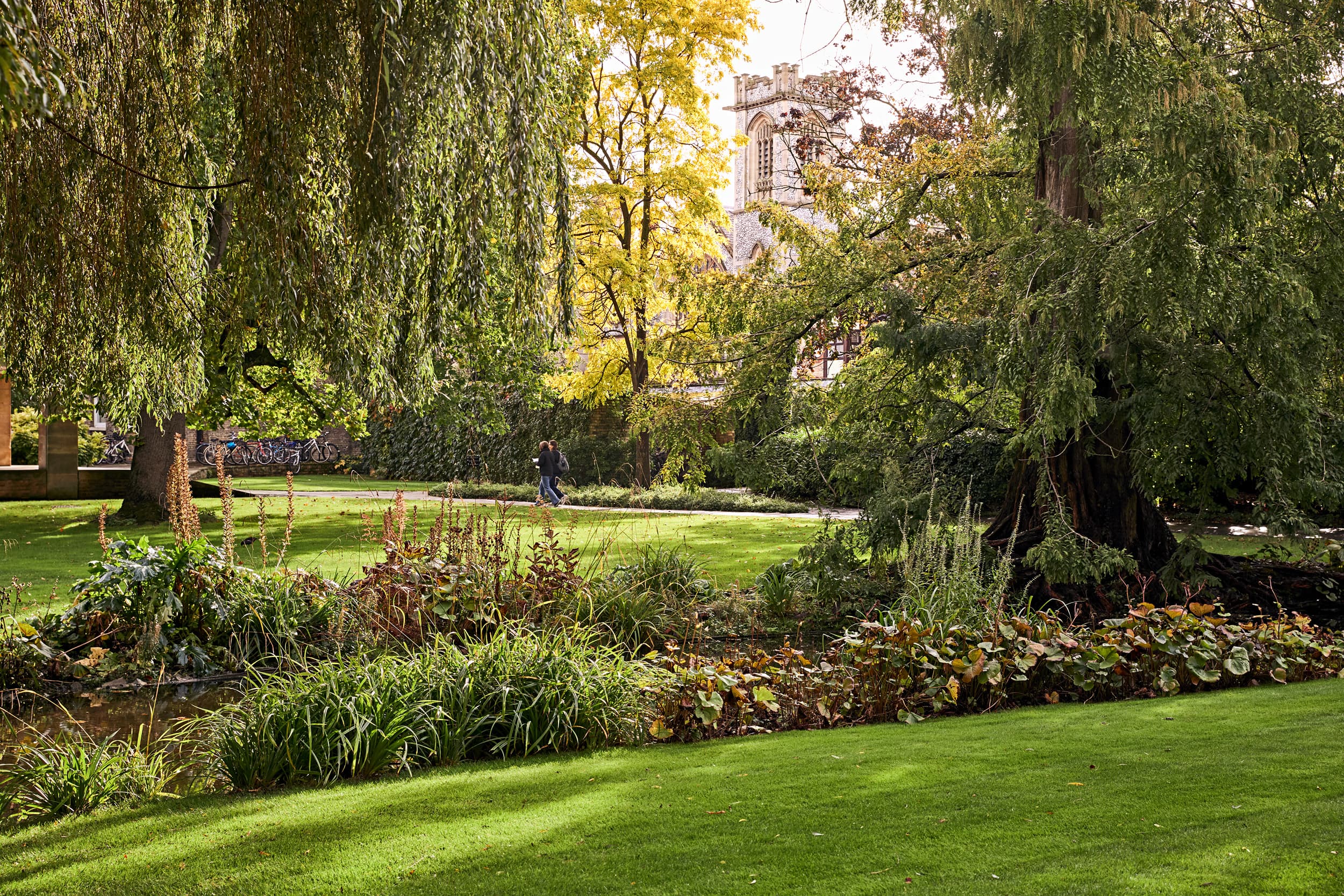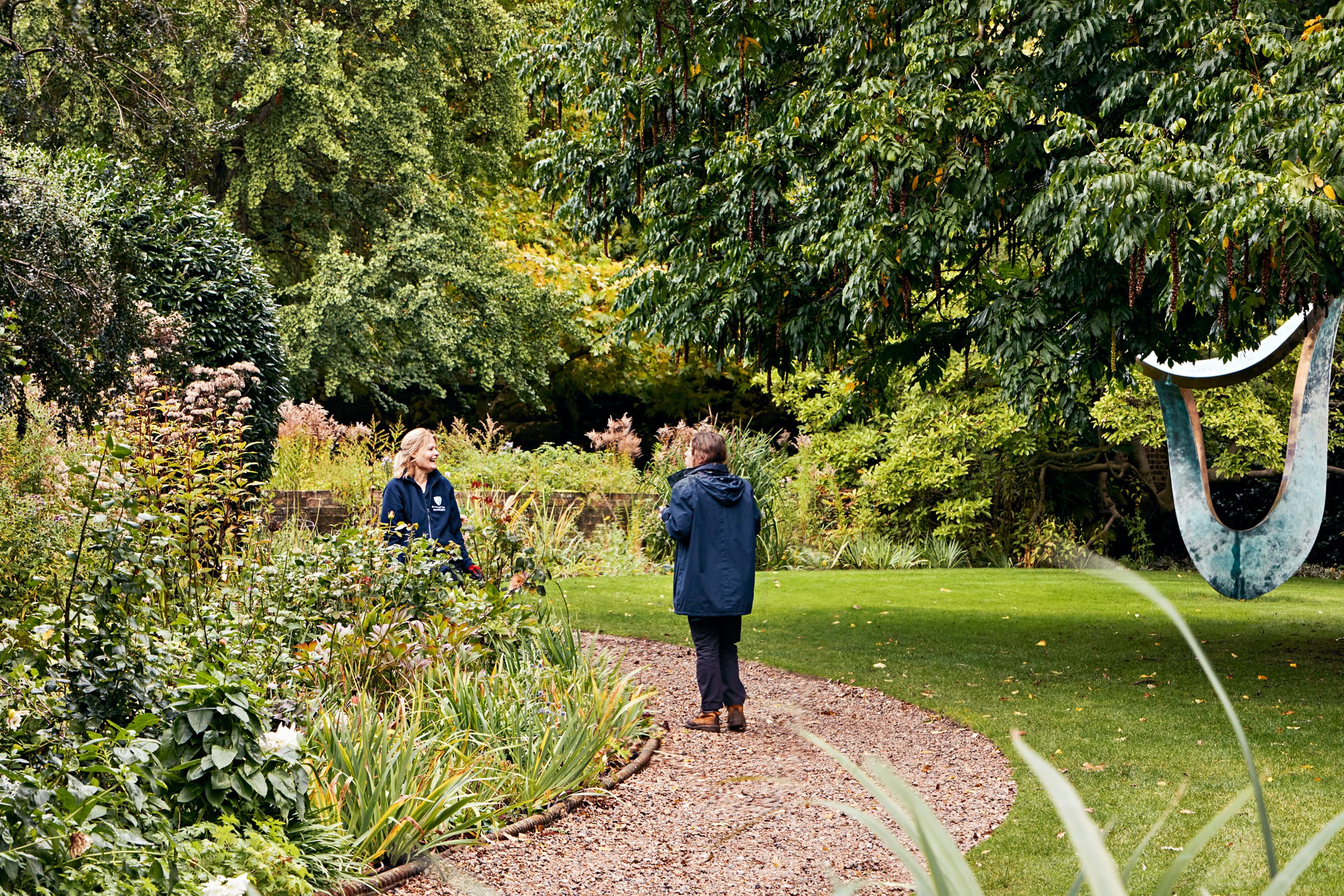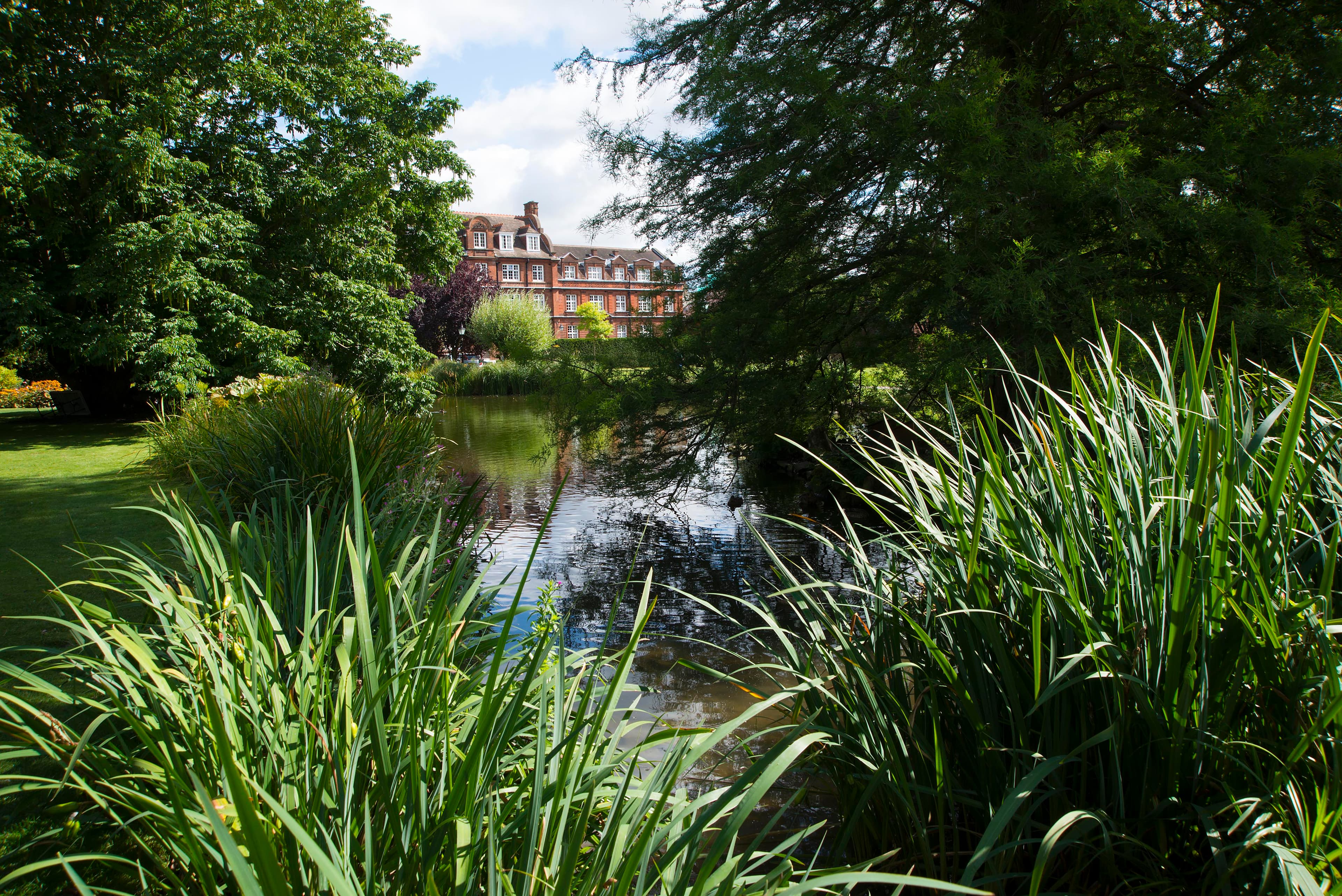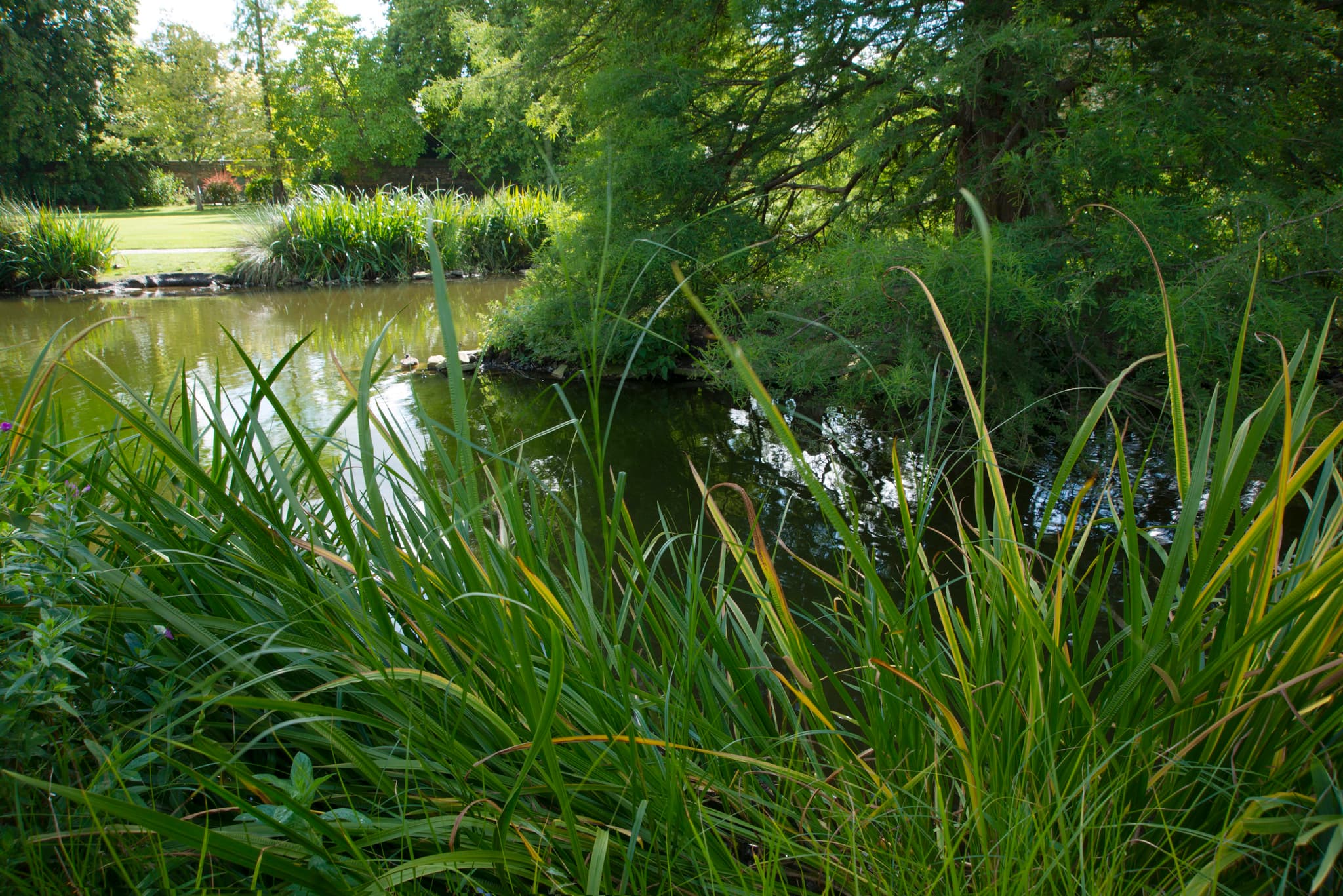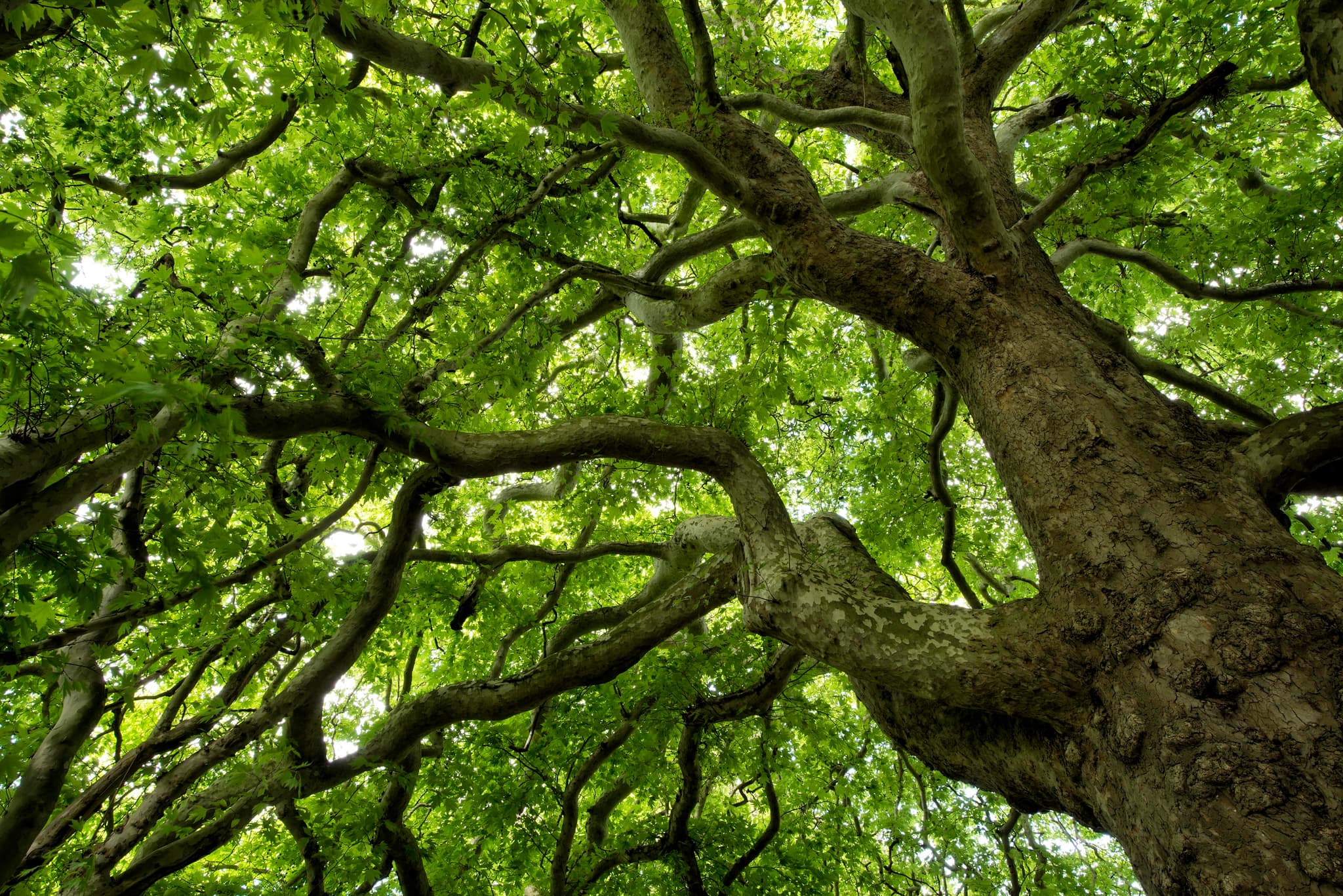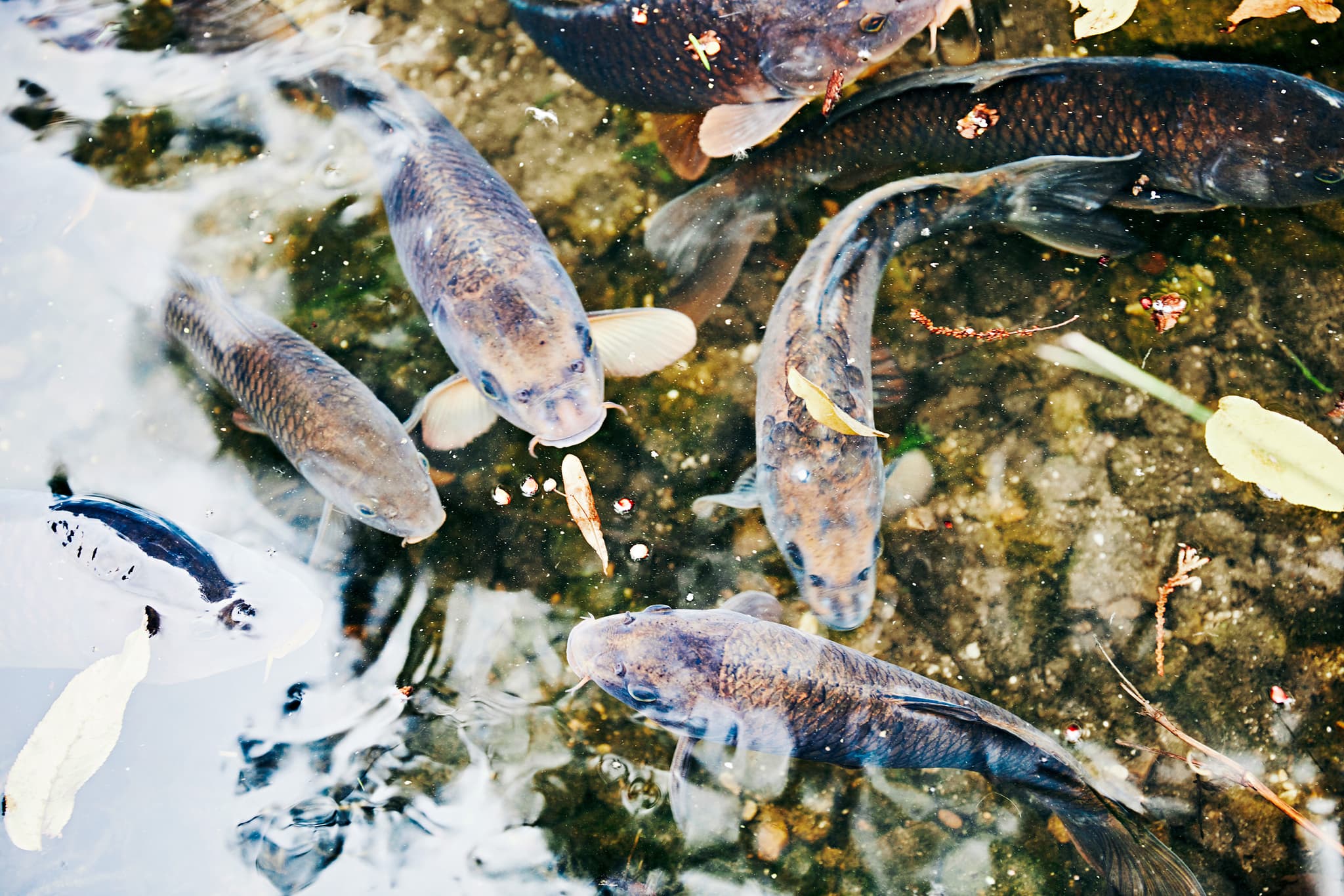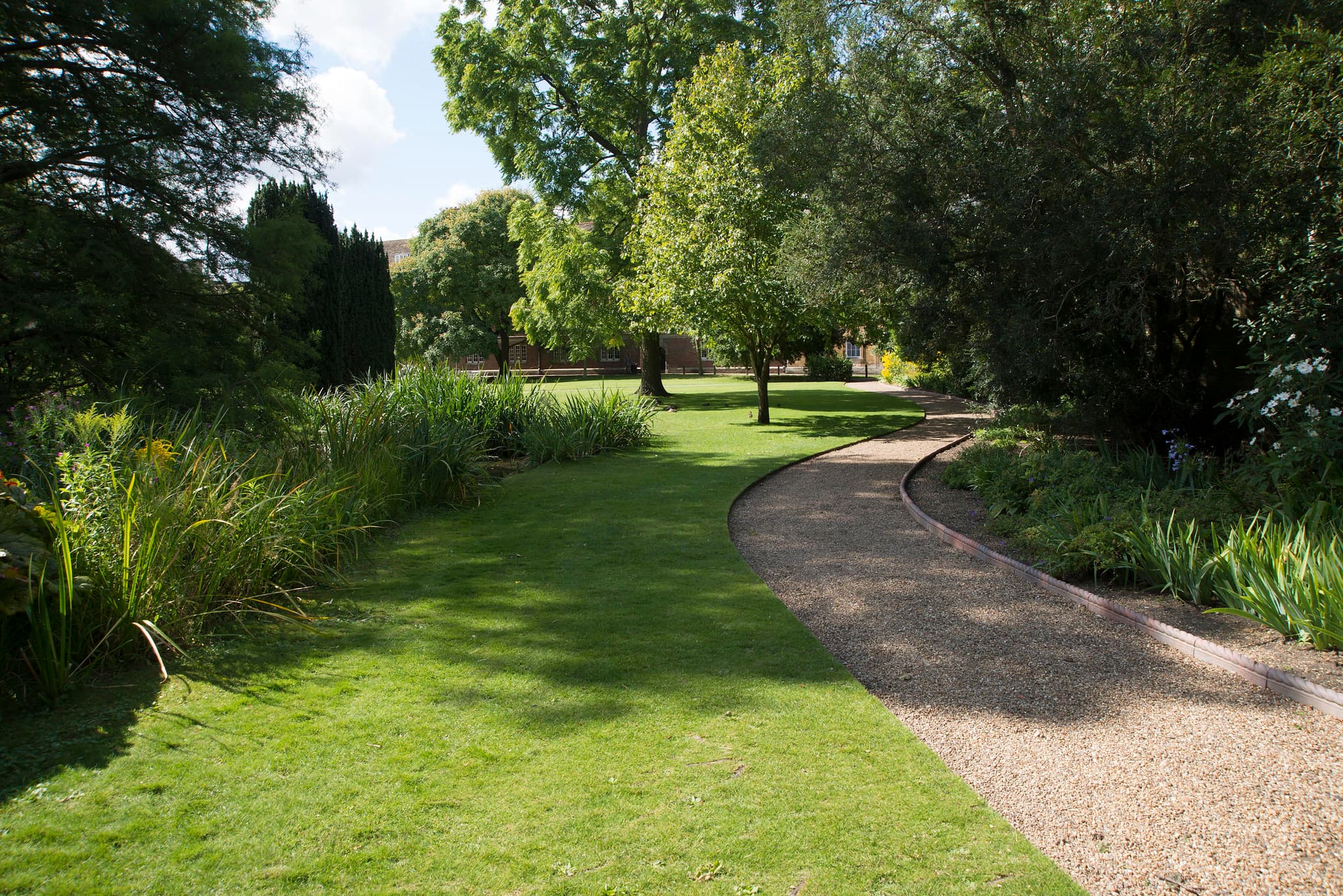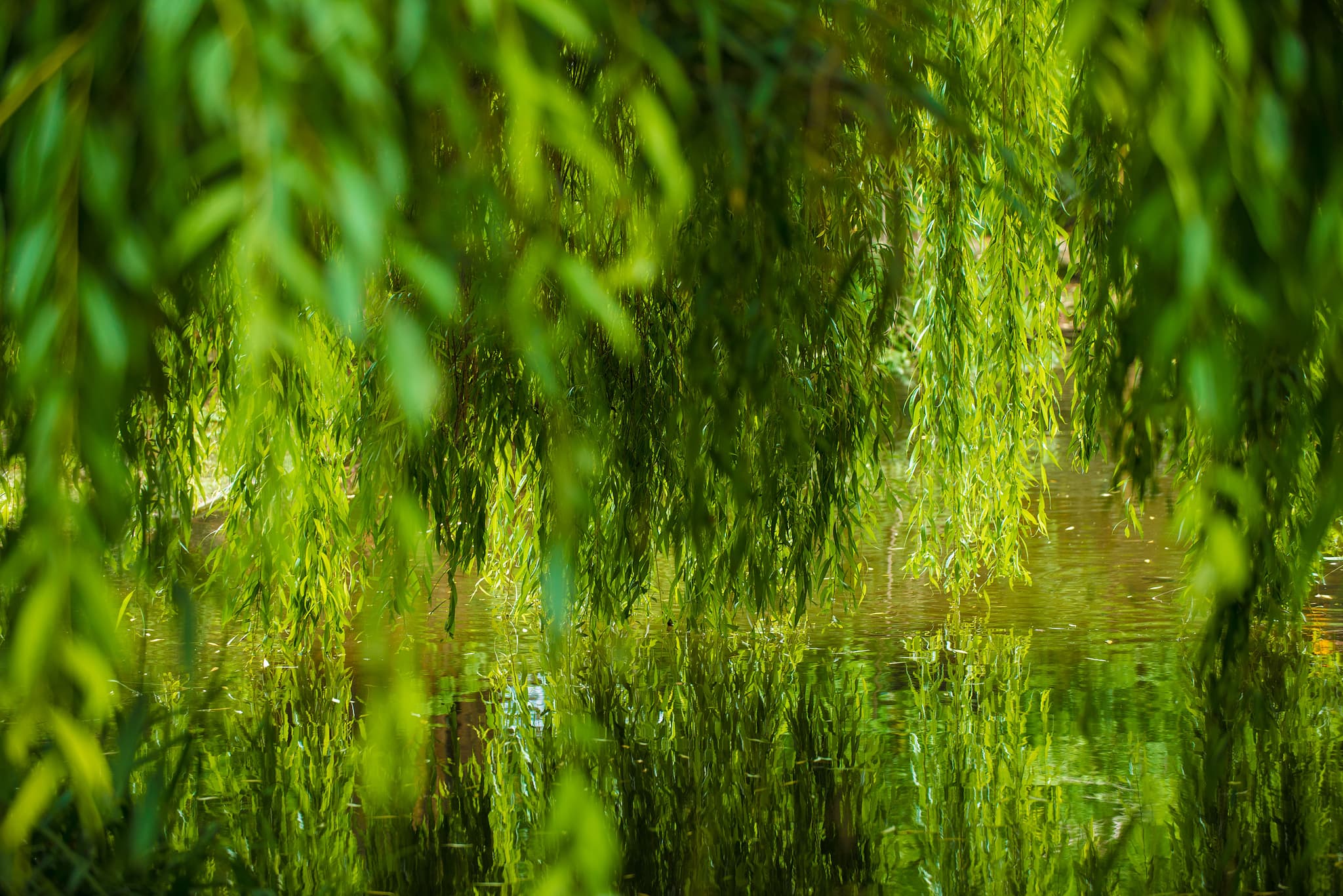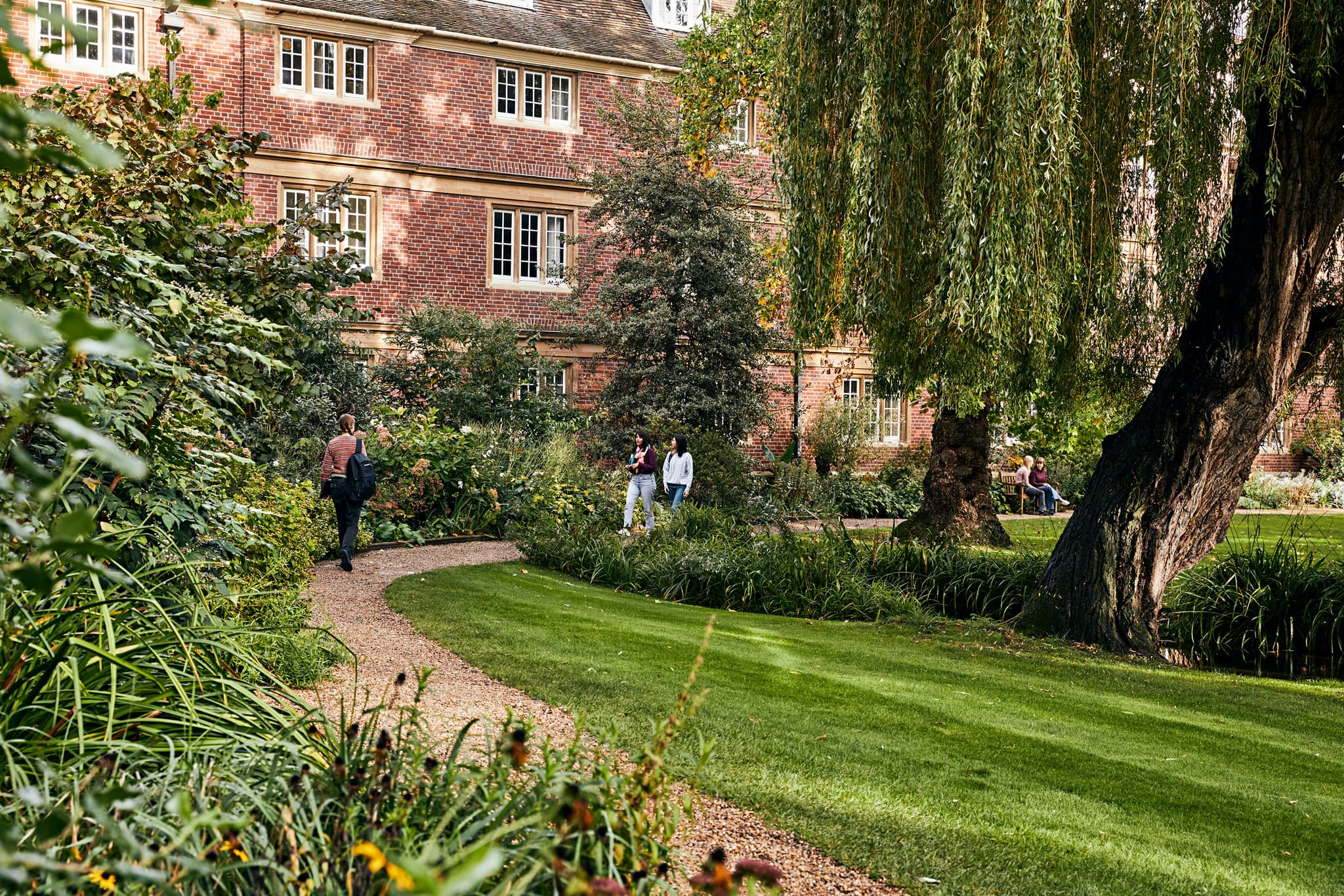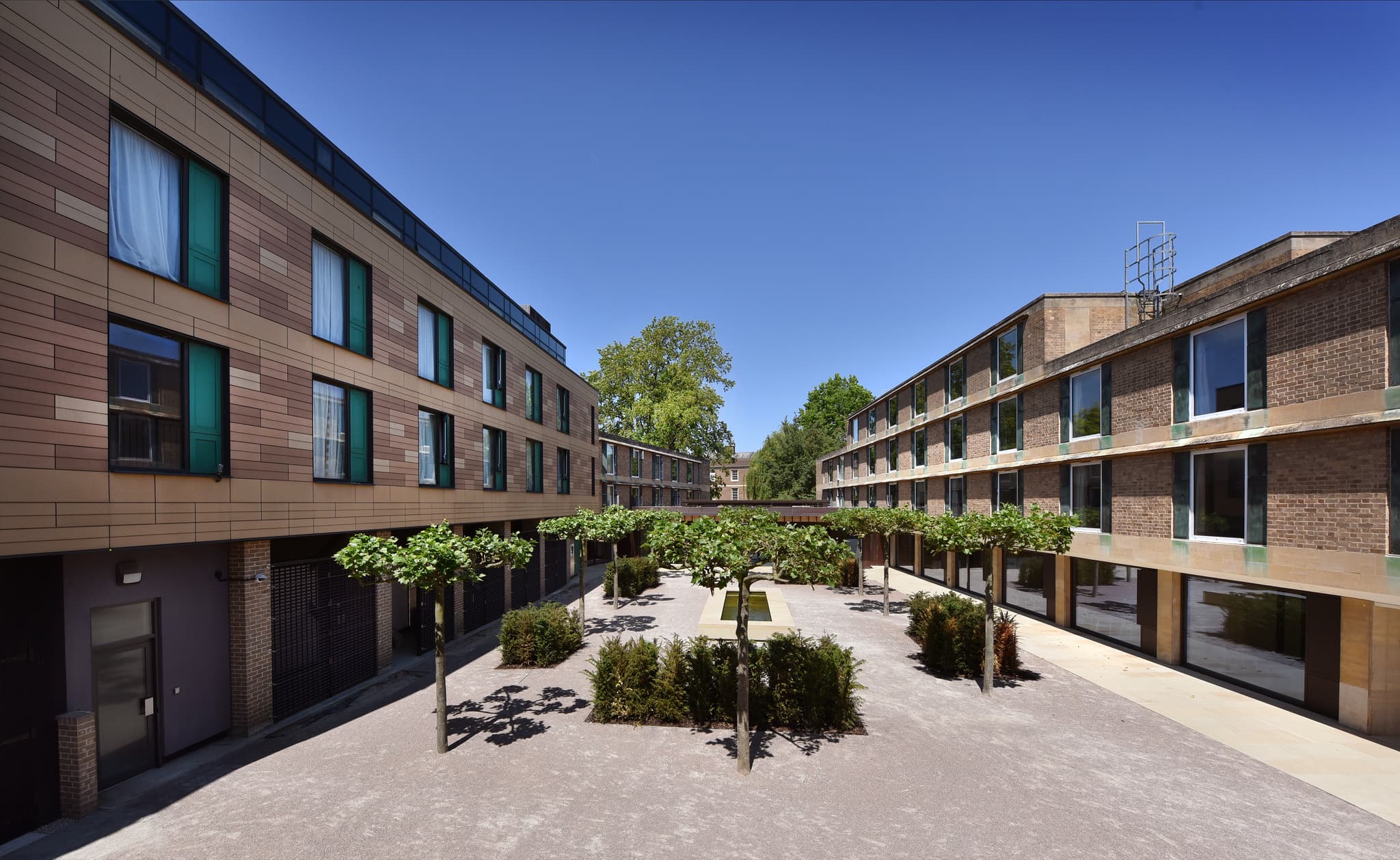Our Gardens
The gardens preserve and reflect the precinct of the original Dominican friary. Incorporating a branch of Hobson's Conduit, which has fed the waterways since the 1630s, a series of courts and gardens stretch between St Andrew's Street, Emmanuel Street, Park Terrace, and Parker Street.
Our formal courts
Front Court is laid to a square lawn, retaining the traditional 'court' structure common in Cambridge colleges. Seasonal interest is provided by window boxes and planting at the lawn's corners. On the north side of the College Hall is New Court, which is one of the oldest in college. The courtyard, designed by landscape gardener John Codrington in the 1960s, is laid out geometrically as an Elizabethan–style parterre herb garden, with intersecting cobbled and paved areas.
In a nod to the nearby kitchens, bay trees and herbs are grown in the beds, with Wisteria sinensis (Chinese Wisteria) and Parthenocissus tricuspidata (Boston Ivy) scaling the original Dominican and Elizabethan surrounding walls. Across Emmanuel Street is North Court: a set of accommodation blocks with a united architecture and garden design. The sunken oval lawn contains a Paulownia tormentosa (Foxglove Tree), planted in 1961. This area has been transformed into a wildflower meadow as part of the College's ongoing biodiversity project, begun in 2021.
The expansive gardens are a hidden gem amid the bustle of the city centre
Paddock and Fellows' Garden
Unusually among the University’s older colleges, Emmanuel has the benefit of a large, open area of garden beyond the formal courts. Known as the Paddock, this lawn is flanked by mature trees, including a Koelreuteria paniculata (Golden Rain Tree). The large pond dates from the time of the Dominicans, but its curved shape and island, in the centre of which is a Taxodium distichum (Swamp Cypress), were created in the 1960s, to John Codrington’s designs. Long herbaceous borders lead to the Jester Garden. Located in the centre of this small lawn is Wendy Taylor's 1994 bronze sculpture Jester. The private Fellows' Garden, which stands alongside the Paddock, is planted with herbaceous and winter interest borders, and its walls feature a white Wisteria floribunda alba. Emmanuel's most famous tree, a magnificent weeping Platanus orientalis (Oriental Plane) dominates the space, adding interest in every season. Other mature and specimen trees include a Mespilus germanica (Medlar Tree).
Hobson's Conduit connects our waterways from Chapman's Garden to the Paddock pond
Chapman's Garden
The Chapman's Garden Pond dates from 1631, when a branch channel from Hobson's Conduit, Cambridge’s famous waterway, was laid across the college grounds. This garden is well–known for its mature trees, including two Iriodendron tulipifera (Tulip Tree), and a ‘fossil’ tree, Metasequoia glyptostroboides (Dawn Redwood). This was grown from seeds sent from China in 1948 to Emmanuel’s professor of botany, Frederick Brooks, and planted directly next to the pond. It is now regarded as one of the grandest specimens in the country.
Planting in Young's Court at the south–west corner of the College include roof–pruned Platanus acerifolia (London Plane) and topiarised Taxus baccata (English Yew) in Tyler's Garden, which is structured around a porous surface, with a rainwater harvesting system underneath for irrigation. A Parrotia persica (Persian Ironwood) specimen tree is in the centre of the Harris Garden. Raised beds are planted with biodiversity in mind, with climbing plants in Furness Lodge, including Trachelospermum jasminoides (Star Jasmine) and Hydrangea petiolaris (Climbing Hydrangea).
Biodiversity in the College
Ribbons of wildflower planting on the site create a 'superhighway' for insects and pollinators. It runs across the College, between Christ's Pieces and Parker's Piece, encouraging biodiversity in the urban centre of Cambridge. Beehives and bug hotels create further insect habitats.
Gardening in our community
Our community garden in Park Terrace is a new initiative for 2024. It is aiming to open opportunities for horticultural education and to provide a place of growing and healing for the whole college community. The College equips gardeners for the future, working as part of Cambridge University and Colleges' apprenticeship scheme, and placements with the WFGA. We have a partnership with Shuttleworth College, to support young people with work experience in a world-class garden. Our gardeners use glasshouses and cold frames to grow on and overwinter plants, encouraging education through learning and sowing seeds for the college planting.
Spirit of Place: Three New Artist Commissions
Our spirit and our place are inseparable. It is as if the openness of our spaces fosters openness of mind. Our shared grounds, where Fellows, staff, students and post–doctoral researchers mingle, create a sense of community and meritocracy. New perspectives glimpsed through arches and branches reflect our ceaseless search for new ways of seeing the world, and the many layers of history that characterise our site reveal our respect for tradition and passion for progress. Emmanuel College
The development of a new court, providing much–needed additional social and teaching space as well as undergraduate accommodation, created an opportunity to commission two artists and an artist group to make contributions that celebrate the history and achievements of Emmanuel while looking towards the future.
The selected artists worked with the college and the projects designers in response to the Spirit of Place vision to create commissions that are significant, thoughtful and integrated into this peaceful and reflective environment. The artworks are intended to benefit college residents, visitors and the local community.
The resulting installations complement artworks already in the college collection.

